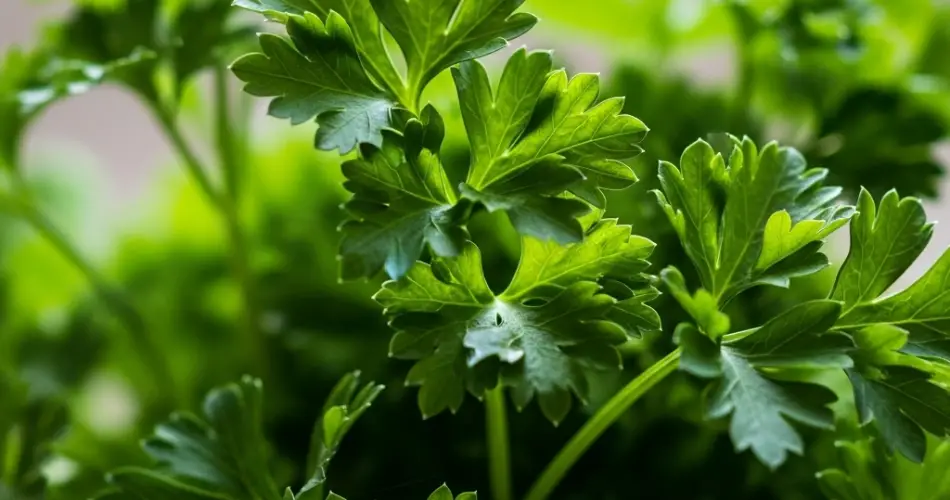Parsley is one of the most versatile and widely used herbs in the kitchen. Whether you grow curly or flat-leaf (Italian) parsley, harvesting it correctly is the key to keeping your plant healthy and productive over a long period. If you’ve ever noticed your parsley turning yellow, becoming leggy, or producing fewer leaves, the problem may lie in how—and when—you’re harvesting it.
Learning how to harvest parsley the right way ensures a steady supply of fresh, flavorful leaves while encouraging vigorous, bushy growth. Here’s everything you need to know about harvesting parsley to keep it growing strong.
Understanding How Parsley Grows
Parsley is a biennial plant, which means it typically lives for two growing seasons. In its first year, it focuses on producing leaves. In its second year, it bolts and sends up a flower stalk before going to seed and completing its lifecycle.
Because of this, you’ll get the most robust harvests during the first year, especially if you regularly prune and harvest it correctly. Proper harvesting encourages the plant to put energy into producing new leaves rather than preparing for seed.
When to Start Harvesting Parsley
Parsley is ready to harvest once the plant has developed a bushy appearance with multiple stems and the leaves are full-sized—usually around 70 to 90 days after sowing.
As a general rule:
-
Begin harvesting when the outer stems are at least 6 inches (15 cm) tall.
-
Wait until the plant has at least 10-12 healthy stems before you take your first cut.
This gives the plant a strong enough base to continue growing after you remove some foliage.
How to Harvest Parsley for Ongoing Growth
The method you use to harvest parsley affects its ability to keep producing. Here are the steps for continuous harvesting:
1. Harvest from the Outside In
Always snip stems from the outer edges of the plant first. These are the oldest and most mature leaves. Leave the center stems untouched, as this is where new growth emerges.
2. Cut the Entire Stem at the Base
Don’t just pluck off individual leaves. Instead, use clean scissors or garden shears to cut the entire stem near the soil line. This encourages the plant to grow new stems from the base, making it fuller over time.
3. Avoid Over-Harvesting
Never remove more than one-third of the plant at a time. Taking too much can weaken the plant and stunt its growth. If you need a large quantity, harvest from multiple plants or in stages.
4. Harvest Regularly
Frequent harvesting keeps the plant productive. Try to pick parsley at least once a week during the growing season to prevent the stems from becoming woody or bitter.
Tips to Keep Parsley Thriving After Harvest
To ensure your parsley plant keeps producing all season long, follow these care practices after harvesting:
-
Water Consistently: Parsley likes moist but not soggy soil. Keep the soil evenly damp, especially in hot weather.
-
Feed Occasionally: A diluted liquid fertilizer or compost tea every 4–6 weeks helps support leaf production.
-
Mulch Lightly: Applying mulch around the base retains moisture and suppresses weeds.
-
Pinch Flower Buds: If you see your parsley beginning to send up a flower stalk, pinch it off immediately. Once parsley bolts, it stops producing edible leaves and turns bitter.
Can You Harvest Parsley in the Second Year?
In its second year, parsley will begin to focus on flowering and seed production. At this point, the leaves become fewer and less flavorful. You can still harvest early in the second year, but the plant will soon bolt. If you want parsley year-round, it’s best to plant new seeds each year and treat parsley as an annual.
To maintain a steady supply:
-
Sow new parsley seeds every few months in succession.
-
Start seedlings indoors or in small pots so you can easily replace older plants.
Storing and Using Harvested Parsley
Once harvested, parsley can be stored for later use:
-
Refrigeration: Wrap stems in a damp paper towel and place them in a plastic bag or airtight container in the fridge.
-
Freezing: Chop and freeze parsley in ice cube trays with a little water or olive oil.
-
Drying: Hang small bunches upside down in a dry, shaded space until crisp, then store in airtight jars. Note that dried parsley loses much of its flavor compared to fresh or frozen.
Conclusion
Parsley is a hardworking herb that rewards you with abundant harvests when cared for properly. By harvesting from the outer stems, cutting at the base, and avoiding overharvesting, you encourage continuous new growth and keep your plant producing fresh, flavorful leaves for months. With regular attention and proper care, you’ll enjoy a thriving parsley plant that enhances your cooking and adds vibrant green to your garden or kitchen windowsill.



